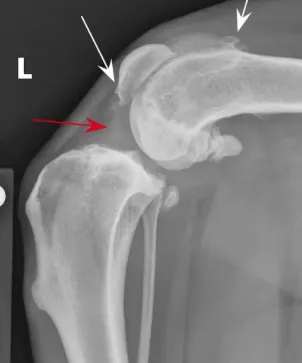Diagnostic Assessment of Cranial Cruciate Ligament Tears in Dogs
Jonathan Miller, DVM, MS, DACVS (Small Animal), Eclipse Specialty & Emergency Pet Care, Whippany, New Jersey

In the Literature
Ashour AE, Hoffman CL, Muir P. Correlation between orthopaedic and radiographic examination findings and arthroscopic ligament fibre damage in dogs with cruciate ligament rupture. Aust Vet J. 2019;97(12):490-498.
The Research …
Diagnosis of cranial cruciate ligament (CCL) tears is made through a combination of orthopedic examination findings (eg, positive cranial drawer, cranial tibial translation) and radiographic changes (eg, effusion, osteoarthritic change).
This study evaluated how well preoperative findings correlated with arthroscopic assessment of CCL fiber damage in 29 dogs with complete CCL tears. Patients were assessed while awake, under sedation, and under anesthesia. Most were found to have pain on stifle hyperextension and tibial internal rotation; CCL tear was associated with a reduced stifle range of motion. No correlation was found among degree of medial buttress, periarticular fibrosis, and palpable stifle laxity, whereas stifle laxity and degree of lameness were positively correlated. Dogs with high osteoarthritis scores on radiographs had less severe cranial drawer when awake, but this difference became insignificant when patients were sedated or under anesthesia.
The degree of CCL fiber damage was most correlated with the severity of lameness and with a positive cranial tibial translation test. Medial meniscal damage was most correlated with pain on internal rotation of the stifle and severity of radiographic osteophytosis. Cranial drawer was not significantly associated with degree of fiber damage or medial buttress. No association was found between degree of fiber damage and level of synovitis, effusion, or osteoarthritic change.
… The Takeaways
Key pearls to put into practice:
The degree of lameness in a dog with a CCL tear is associated with increased CCL fiber damage.
Pain on internal rotation of the stifle should raise suspicion of meniscal injury.
Assessments of dogs both awake and sedated can provide improved clinical information.
Cranial tibial translation under tibial compression may be more informative than cranial drawer examination.
You are reading 2-Minute Takeaways, a research summary resource presented by Clinician’s Brief. Clinician’s Brief does not conduct primary research.